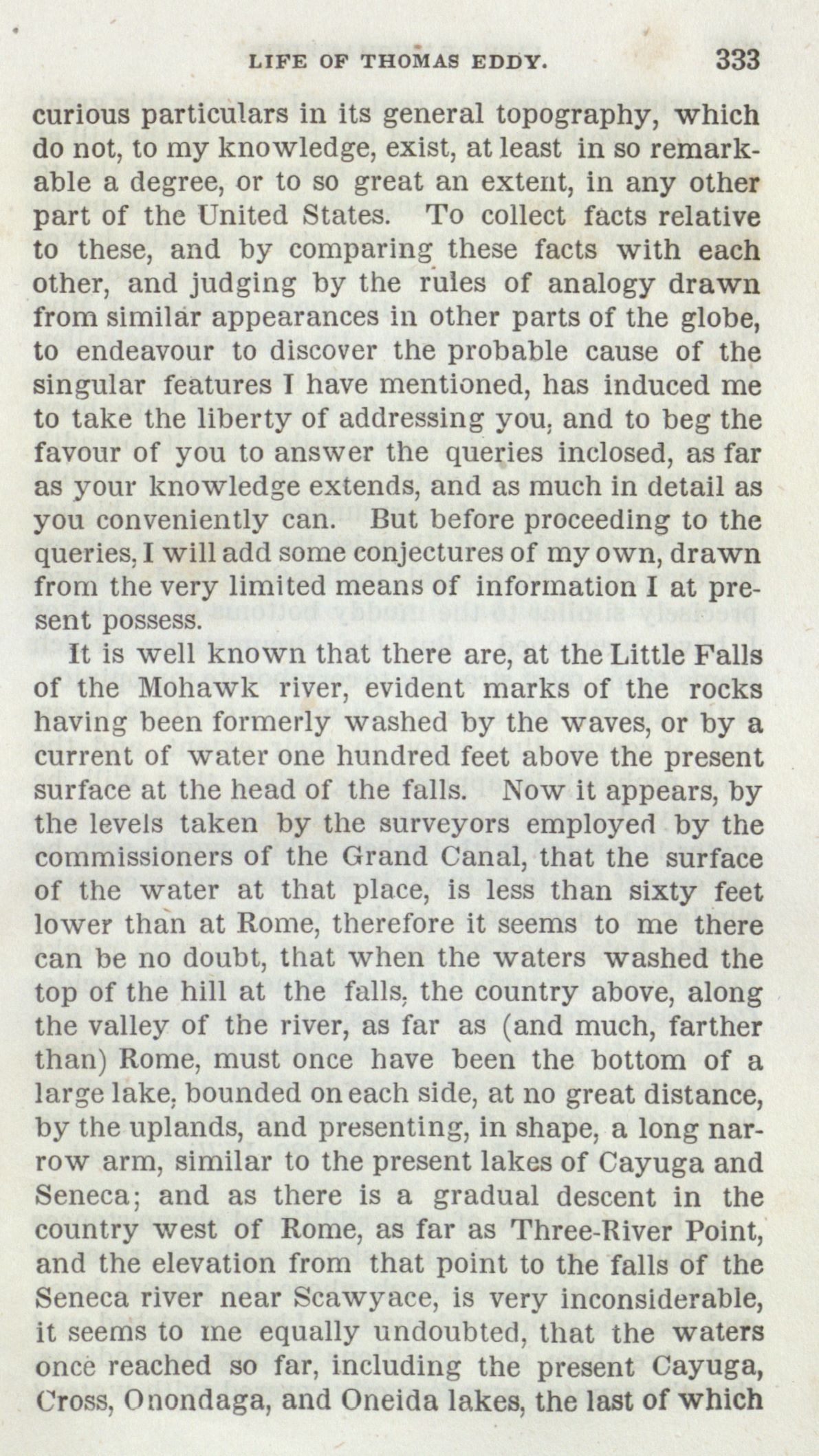curious particulars in its general
topography, which
do not, to my knowledge, exist, at least
in so remark-
able a degree, or to so great an extent, in
any other
part of the United States. To collect facts
relative
to these, and by comparing these facts with
each
other, and judging by the rules of analogy
drawn
from similar appearances in other parts of the
globe,
to endeavour to discover the probable cause of
the
singular features I have mentioned, has induced
me
to take the liberty of addressing you, and to beg
the
favour of you to answer the queries inclosed, as
far
as your knowledge extends, and as much in detail
as
you conveniently can. But before proceeding to
the
queries, I will add some conjectures of my own,
drawn
from the very limited means of information I at
pre-
sent possess.
It is well known that there are, at the Little Falls
of the Mohawk river, evident marks of the rocks
having been formerly washed by the waves, or by a
current of water one hundred feet above the present
surface at the head of the falls. Now it appears, by
the levels taken by the surveyors employed by the
commissioners of the Grand Canal, that the surface
of the water at that place, is less than sixty feet
lower than at Rome
can be no doubt, that when the waters washed the
top of the hill at the falls, the country above, along
the valley of the river, as far as (and much, farther
than) Rome
large lake, bounded on each side, at no great distance,
by the uplands, and presenting, in shape, a long nar-
row arm, similar to the present lakes of Cayuga and
Seneca; and as there is a gradual descent in the
country west of Rome
and the elevation from that point to the falls of the
Seneca river near Scawyace
it seems to me equally undoubted, that the waters
once reached so far, including the present Cayuga,
Cross, Onondaga, and Oneida lakes, the last of which

